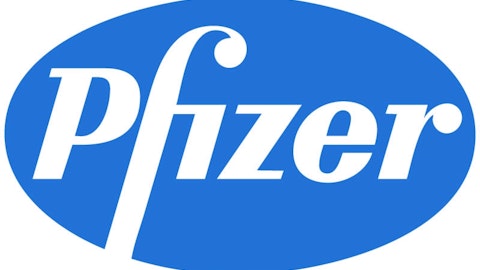Just in case you missed it, the future has arrived. A Michigan toddler is living proof.
Doctors used 3-D printing to create an artificial airway splint last year for Kaiba Gionfriddo. Without the airway, the then-3-month-old baby wouldn’t have survived. Little Kaiba is now 19 months old and breathing fine.
This isn’t the only example of the medical use of 3-D printing. The technology appears likely to turn the world of medicine upside down over the next few years. Here’s how.
Turning science fiction into fact
If 3-D printing can be used for creating artificial airways, why couldn’t it also be used to build bones and cartilage? Actually, it already can.
Researchers at the Wake Forest Institute for Regenerative Medicine developed a 3-D printer that prints cartilage. The prototype machine used polymers and a solution of cartilage cells from a rabbit ear to generate cartilage for implanting in mice. This approach holds significant promise for use in treating human knee injuries.
In March, radical surgery was performed on a patient in the U.S. that replaced 75% of the patient’s skull with an implant made using a 3-D printer. Oxford Performance Materials, which created the 3-D printer, says that skulls are just the beginning. The company plans to create more implants for other bones, including femurs, knee caps, and hips.
Wake Forest scientists are doing more with 3-D printing as well. Researchers conducted a project where they printed skin cells directly onto a burn wound. Mice with bioprinted skin healed 40% more quickly than other mice that didn’t receive the treatment. The Wake Forest team has also moved forward with bioprinting of kidney cells. What’s more, the technology actually has been used to print a three-dimensional kidney prototype.
Meanwhile, San Diego-based Organovo is using 3-D printing technology to print liver cells. The cells created by this bioprinting process produce cholesterol and express enzymes — just as “real” human liver cells do. Along similar lines, researchers at Heriot-Watt University in Scotland have built a printer to generate embryonic stem cells.
Upheaval on the way
3-D printing of body parts isn’t merely a cool science experiment. This technology seems likely to cause an upheaval in multiple ways.
Obviously, the ability to print bones, cartilage, skin, and eventually functional organs should save lives and radically change the care and treatment for many patients. This opportunity is especially appealing to the military.
Seattle Children’s Hospital is already using technology from 3D Systems Corporation (NYSE:DDD) to improve care. Bioengineers with the hospital used 3D Systems’ VFlash Desktop 3-D printer to create solid models of infant nasal and oral passages. These models were then used to test different respiratory devices to determine which was most effective for use in treating patients.

The financial impact of 3-D bioprinting could be enormous as well. For example, St. Jude Medical, Inc. (NYSE:STJ) is one of several makers of artificial heart valves. The company made more than $1.3 billion in 2012 from its cardiovascular business segment, which includes heart valve and structural heart defect products. What would happen to this market if surgeons had the ability to bioprint heart valves customized for their patients? We’re talking about a change of seismic proportions.
Pharmaceutical firms are continually seeking to develop drugs more quickly. These companies would benefit tremendously from gaining access to human tissue and cells to speed up research and testing for new drugs.
At least two pharmaceutical companies already see the potential. Pfizer Inc. (NYSE:PFE) and United Therapeutics Corporation (NASDAQ:UTHR) have partnered with Organovo. No details have been disclosed about the arrangement between the companies, but Organovo’s vice president of commercial operations, Mike Renard, says that his company received funding from the larger organizations with some sharing of rights to the technology.
Another major target for disruption is in the organ transplant area. According to World Health Organization estimates, only 10% of current needs for replacement organs is being met worldwide. A huge black market has emerged as a result. The ability to print organs would radically change this dynamic.
The “future future”
While the future is here in some respects, the future also is yet to come. It will be years before some uses of 3-D printing, such as printing organs, is fully viable. What should investors looking to ride the wave do in the meantime?
One option is to buy shares in a more established 3-D printing company such as 3D Systems Corporation (NYSE:DDD). However, while 3D Systems’ products can be used for some medical applications, they aren’t suited right now for many of the types of uses discussed earlier.
It will definitely take a great deal of time for this emerging technology to be approved, so the least risky path for now is to wait until 3-D printing of body parts matures somewhat. The “future future” will be here sooner than we probably think.
If you just can’t wait for the future to jump into 3-D printing, The Motley Fool can help you navigate the waters. 3D Systems is at the leading edge of a disruptive technological revolution, with the broadest portfolio of 3-D printers in the industry. However, despite years of earnings growth, 3D Systems Corporation (NYSE:DDD)’s share price has risen even faster, and today the company sports a dizzying valuation.
The article The Next 3-D Printing Revolution: Human Body Parts? originally appeared on Fool.com and is written by Keith Speights.
Fool contributor Keith Speights has no position in any stocks mentioned. The Motley Fool recommends 3D Systems. The Motley Fool owns shares of 3D Systems and has the following options: Short Jan 2014 $36 Calls on 3D Systems and Short Jan 2014 $20 Puts on 3D Systems.
Copyright © 1995 – 2013 The Motley Fool, LLC. All rights reserved. The Motley Fool has a disclosure policy.


